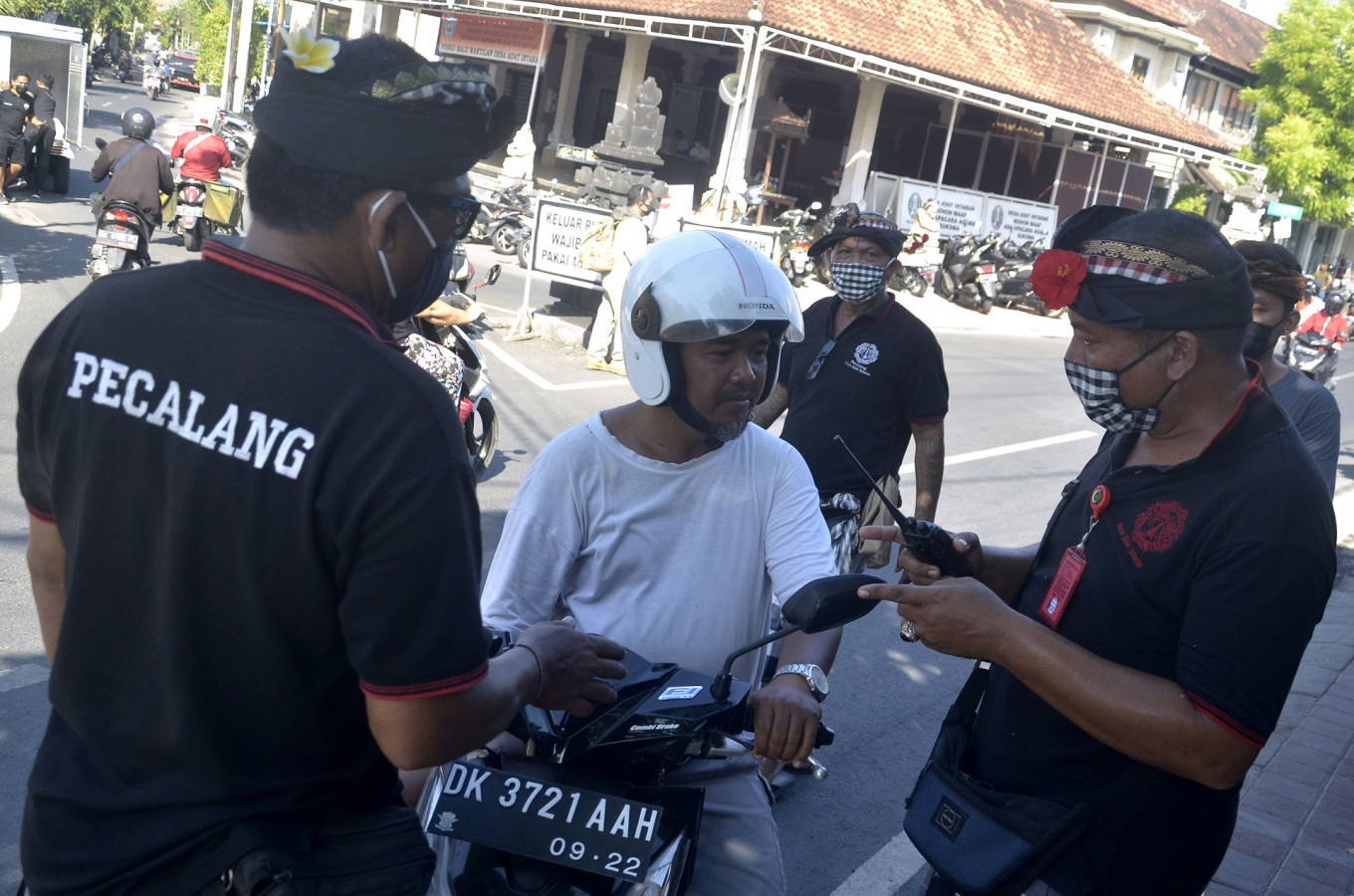
Bali fights virus same way it attracts tourists – with local customs
by Ardila SyakriahIndonesia’s most popular tourist destination, Bali, has its local customs to thank for what officials tout as success in containing the COVID-19 outbreak, as the central government mulls reopening the resort island.
As of Tuesday, Bali had reported 407 cases of infection with 295 recoveries and four deaths – some of the lowest fatality figures in the entire country. Most of the cases were recorded in the capital of Denpasar, as well as in Buleleng and Bangli regencies.
The province, home to some 4.2 million people, reported its first confirmed case of COVID-19 on March 11, despite still welcoming its typical crowds of tourists in the early months of the pandemic.
Unlike other provinces, however, Bali does not publicly disclose the number of patients under surveillance (PDP) or people under observation (ODP), fueling doubt over the veracity of its official figures.
PDP and ODP figures refer to people who are suspected of having contracted the disease but who are still awaiting test results or are about to get tested.
"It's important to know the number of ODP and PDP to see how good the government has been in detecting cases," said I Made Ady Wirawan, the head of Udayana University's School of Public Health.
“It might show the true number [of cases].”
Ady said that Bali had not been testing enough people for its methods to be deemed reliable, an issue facing many other provinces nationwide.
As of May 21, Bali had only tested 8,116 samples, with more than one sample possibly taken from a single person, according to a virtual briefing by the Bali administration on Friday.
And while he warned of possible undetected cases from asymptomatic carriers, Ady said there had yet to be reports of an unusual spike in deaths among patients treated for COVID-19 in Bali’s hospitals.
Bali’s successful containment efforts have largely been attributed to the active role played by traditional villages, which make up the majority of the island’s settlements, as the majority of people are Hindus who comply with local religious customs.
The island’s authorities have not resorted to imposing the large-scale social restrictions (PSBB) seen elsewhere in the country and have instead relied on the island's 1,493 traditional villages to restrict people’s movements, which Bali Governor I Wayan Koster insisted had been a success.
The villages have a well-defined leadership structure, complete with pecalang (traditional guards), who work voluntarily in the service of the people – known as ngayah in Balinese culture.
Village leaders and the pecalang are tasked with screening visitors seeking to enter the villages, monitoring people in quarantine, preventing large gatherings and making sure people follow health protocols, such as wearing masks and washing their hands frequently.
Those who violate the rules could face social sanctions that are perceived negatively by the Balinese people, said Jero Mangku Widiarta, the head of Besakih village, home to the island’s largest and most important Hindu temple, Besakih Temple.
“Bali without its guests is a pandemic in itself. [...] That’s why the Balinese people are compliant with the existing protocols – so the guests will return sooner,” Jero said.
The Balinese are known for being very compliant with the local customs enforced by traditional villages, mainly because they are very old, said Wayan P. Windia, a customary law professor at Udayana University.
The villages have been around for centuries, even before the Netherlands conquered the region in 1908. One inscription from 891 AD even acknowledges their existence and importance in Balinese culture.
"People in traditional villages are bonded through sakala [reality] and through niskala [Hindu beliefs]," he said.
It was only in a 2019 regional government regulation on traditional villages that these social units were recognized administratively.
Meanwhile, Coordinating Maritime Affairs and Investment Minister Luhut Pandjaitan said earlier this month that the government had considered reopening the economy in Bali and four other regions, citing a plateauing of COVID-19 infections.
Bali’s losses in the tourism sector are estimated to total around Rp 9.7 trillion per month, according to the administration, as global restrictions on movement pummeled the industry that contributes to around 60 percent of the province’s gross regional product.
According to Indonesian Tourist Industry Association (GIPI) data, Bali recorded an 11 percent year-on-year increase in foreign tourist arrivals in January, before arrivals dropped 18 percent in February, a further 42.32 percent in March and 93.24 percent in April.
Bali Deputy Governor Tjokorda Oka Sukawati said in an online discussion in April that the impact of the COVID-19 pandemic had been even worse than past disasters, including the deadly 2002 and 2005 Bali bombings, when the informal sector had helped keep the economy afloat.
While confidence remains high that the province will keep infections under control, Ady of Udayana University warned against lifting restrictions too early for fear of a second, more severe, wave of infections, given that the rate of local transmission was still climbing.
Local health authorities have raised concerns over the rising number of cases stemming from local transmissions, as it was previously thought that the majority of cases were imported, including by returning migrant workers.
As of Monday, local transmissions accounted for 42.17 percent of total cases, with 67 out of 97 active cases still receiving treatment at seven hospitals and quarantine facilities. New clusters of local transmissions recently emerged in at least three villages.
"When more tests are carried out and fewer cases are found, then confidence in the ‘new normal’ will increase. At that time, intervention will shift from community-based to case-based,” Ady said. “But for now, testing and tracing must be improved.”
If you want to help in the fight against COVID-19, we have compiled an up-to-date list of community initiatives designed to aid medical workers and low-income people in this article. Link: [UPDATED] Anti-COVID-19 initiatives: Helping Indonesia fight the outbreak